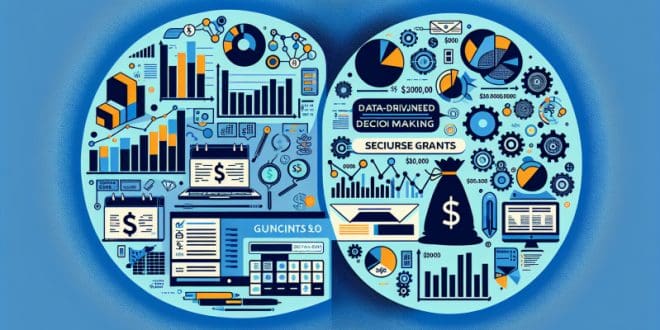In today’s competitive nonprofit sector, securing grants is more challenging than ever. With an abundance of organizations vying for limited funding, it is crucial for nonprofits to find a way to stand out. Enter the power of data analytics. This tool has the potential to transform the grant seeking process, allowing nonprofits to make more informed decisions, tailor their applications strategically, and ultimately, secure more funding.
## Harnessing Data to Identify Opportunities
For nonprofits, the first step in the grant seeking journey often involves identifying potential funding sources. Data analytics can streamline this process by allowing organizations to sift through vast amounts of data on past funding patterns, aligning their missions with the priorities of funders. By analyzing variables such as funders’ historical giving trends, focus areas, and geographic preferences, nonprofits can prioritize their efforts and personalize their approach to appeal to the right grantmakers.
Moreover, data can reveal new sectors or communities that may benefit from an organization’s services, highlighting untapped or underserved areas where funding might be more readily available.
## Crafting Winning Grant Applications
The ability to demonstrate a clear understanding and strategic application of data within grant proposals is a significant advantage. Grantmakers are increasingly looking for measurable outcomes and evidence-based programs. Nonprofits that employ data analytics to showcase their past successes, define clear objectives, and predict future impact can create a compelling narrative that resonates with funders.
Key to this process is the collection of relevant metrics – from community needs assessments to programmatic impact data. Nonprofits must articulate how data-driven insights have shaped their projects and goals. Tools such as logic models can help in mapping out the relationship between resources, activities, outputs, and outcomes, providing a solid framework for proposals.
## Demonstrating Impact to Funders
Data analytics not only aids in drafting a persuasive proposal but also plays a critical role in demonstrating the potential for significant and measurable impact. Funders are more likely to invest in projects that showcase a data-driven understanding of the problem and a methodical approach to achieving solutions.
Nonprofits can use data to establish benchmarks and success indicators, making it easier to monitor progress and make real-time adjustments. This proactive approach reassures funders that the organization is results-oriented and committed to achieving the best possible outcomes.
## Embracing Technology and Tools
To effectively employ data analytics, nonprofits must embrace the use of advanced tools and technologies. From customer relationship management (CRM) systems to grant management software, there is a plethora of resources available that can aid in data collection, analysis, and reporting. These systems can track donor behaviors, manage grant deadlines, and compile performance metrics, thereby streamlining the grant seeking process.
Additionally, visualization tools can be used to present data in an accessible and engaging format, both within grant applications and in reports to existing funders. Dashboards, infographics, and interactive charts not only make data easier to digest but also illustrate the organization’s story in a compelling manner.
## Best Practices for Nonprofits
To maximize the potential of data analytics in securing grants, nonprofits should adhere to several best practices. These include establishing a culture of data within the organization, investing in training for staff, ensuring data quality and integrity, and integrating data analytics into all aspects of strategic planning and implementation.
Furthermore, it’s essential for nonprofits to stay current with data privacy regulations and ethical guidelines to maintain the trust of both funders and the communities they serve.
## Conclusion
The use of data analytics is revolutionizing the way nonprofits approach grant seeking. By leveraging the right data, tools, and strategies, organizations can improve their chances of securing much-needed funding. In doing so, they not only enhance their own sustainability but also increase their capacity to positively impact the communities they serve. As we move into an era where data is king, nonprofits that adapt to a more analytical approach in their funding strategy will be the ones that thrive.
Data-driven decision-making is not just a trend; it is the new standard for excellence in the nonprofit sector. It’s time for organizations to harness the power of analytics and transform their grant seeking process into a strategic, evidence-based pursuit that delivers results.
 Grants Club Community
Grants Club Community







